Clermont-en-Argonne to Verdun
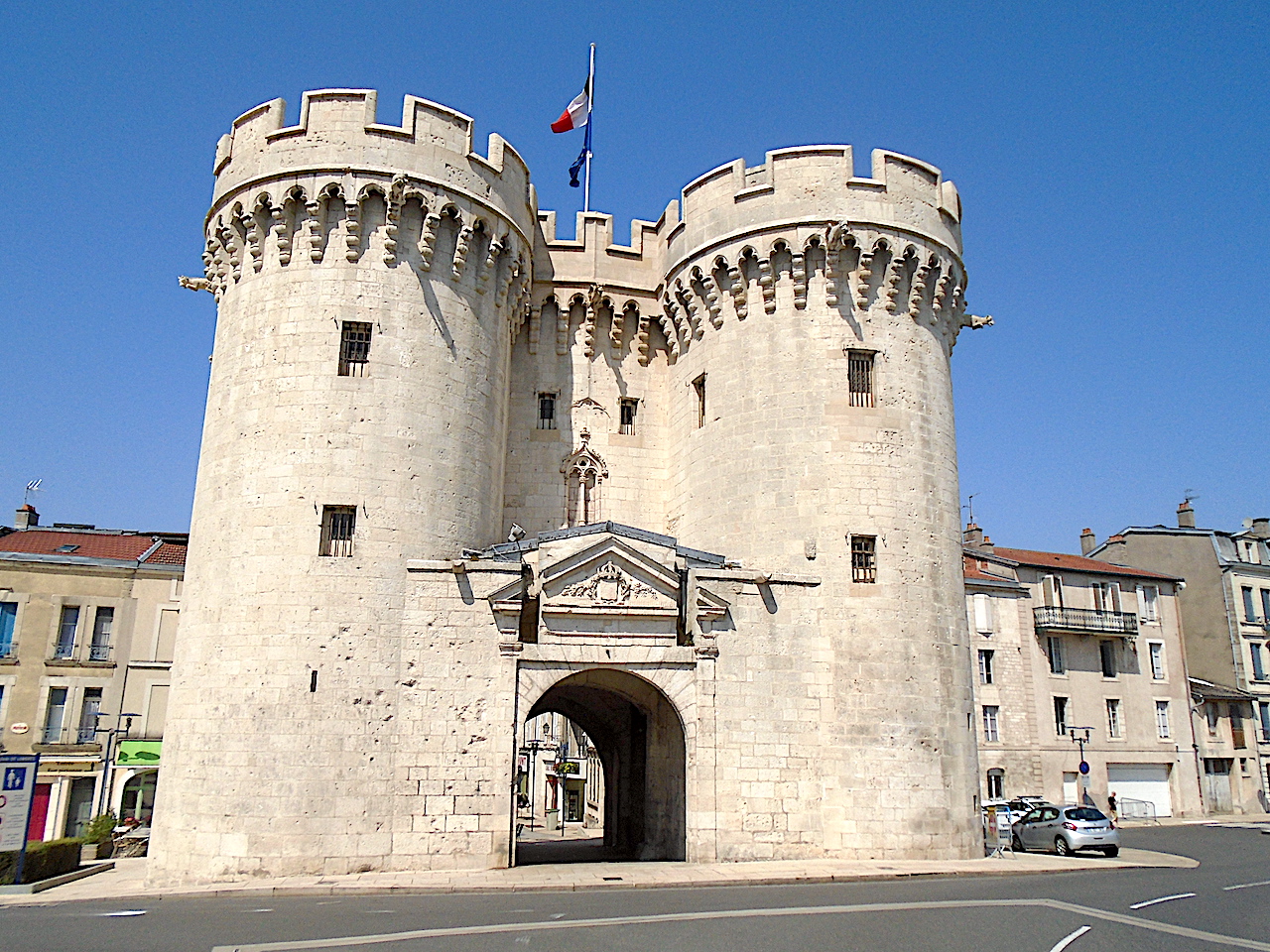
Grand Est
10. Clermont-en-Argonne to Verdun
Difficult
8h
29,2km
+506m
-548m
Step
Embed this item to access it offline
You start your day in the cereal fields and hilly terrain of the Argonne welcomes you with its forests. Make time to visit the villages a dovecote awaits you in Auzéville. The rich heritage of Verdun could be classified in two parts; one part dedicated to the diocese of Verdun with its monasteries in the city and another part testifying to the First World War. We advise you to devote a day to discover the history of this city fortified by Vauban.
11 points of interest
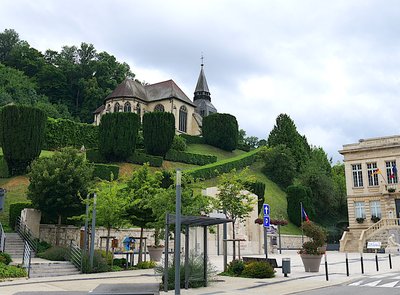
Église Saint-Didier à Clermont-en-Argonne - Image : Amis de saint Colomban TouristSaint-Didier Church in Clermont-en-Argonne
The 16th century St. Didier's Church in Gothic and Renaissance style was burnt down by Württemberg soldiers during the First World War. Since 1919 the reconstruction is started. Inside, you can see the tomb of Christ attributed to Ligier Richier, a famous 16th century sculptor from Lorraine attached to the Duchy of Lorraine and Bar. At the end of his life he adopted the Protestant Reformation and then went into exile in Geneva.
The stained glass windows were made by Gruber, a master glassmaker from Lorraine and one of the leaders of the Art Nouveau movement.
Today, Jacques Gruber is considered to be the most prolific master glassmaker in the "École de Nancy" style. He is the author of stained glass windows for the Chamber of Commerce and Industry of Meurthe-et-Moselle, for the Villa Majorelle and the Villa Bergeret as well as the large glass roof of the Galeries Lafayette in Paris.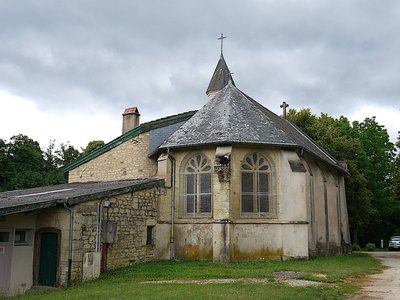
La chapelle Sainte-Anne sur le plateau des Château-forts de Clermont - Image : Amis de saint Colomban HistoricalThe Sainte-Anne plateau in Clermont-en-Argonne
The Lords of Clermont built a castle that was destroyed during the wars between the 11th and 12th centuries. In 1212, the Count of Bar built a new fortress, destroyed and rebuilt by Vauban in the 16th century. Bordering between Lorraine and France, Clermont was bitterly disputed in the centuries that followed until the First World War.
The plateau Sainte-Anne is a place of remembrance 1914 - 1918. A rocky spur with a 17th century chapel Sainte-Anne has a network of underground galleries that probably served as a rescue centre, transmission or refuge. There are no remains on the surface and the galleries are today inaccessible. Enjoy the view of the Meuse plain.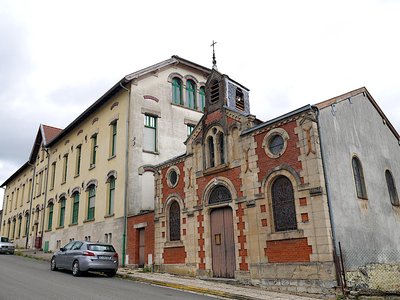
La maison de retraite et la chapelle de l’ancien hospice à Clermont-en-Argonne - Image : Amis de saint Colomban HistoricalHospice of Clermont-en-Argonne
An earthenware factory was created in Clermont-en-Argonne at the end of the 18th century and closed in 1855.
The buildings were transformed into a Hospice. During the First World War the town was very close to the front line and the hospice took in many wounded.
Today the complex has become a retirement home. The chapel houses stained glass windows, made in 1922, which pay tribute to the victims of the war. The chapel is not open to the public.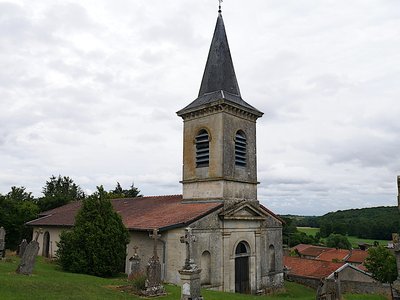
Église Saint-Rémi à Brabant-en-Argonne - Image : Amis de saint Colomban TouristSaint-Rémi Church in Brabant-en-Argonne
The church of Saint-Rémi was built in 1750 to replace a former 14th century chapel. Perched on the hillside, it dominates the village and is surrounded by the cemetery. The bell tower and the nave were rebuilt in 1845.
The bell tower houses two bells and a clock. The church was damaged during the First World War and restored in the 1920s.
At the back of the church, on the left, is the 17th century chapel of the parish priest of Ars, built in recognition of favours obtained but also to honour his relics (piece of cassock and liturgical pall). This chapel was used for a long time for weekday masses.
The church has a statue of Saint-Rémi, bishop of Reims, patron saint of this church and celebrated on the first Sunday of October.
The high altar represents the baptism of Clovis. It is made of gilded wood and dates from the 17th century.
On the floor are five tombstones, one of which is dated 1337. It covers the tomb of Sébastien and Pierre des Menu, founders of the chapel that preceded this church. The other tombstones are burials of priests.
In the past, there were two underground passages linking the church to the presbytery and the church to the cemetery.
Tour de l’église abbatiale Saint-Vanne - Arula.hypothèse.org /chantier église abbatiale Saint-Vanne HistoricalAbbey of Saint-Vanne in Verdun
Benedictine abbey founded 952 by Bérenger, bishop of Verdun. It was under the abbey of Richard de Saint-Vanne (who died in 1046) that it was to be the focus of a monastic reform to return to the rule of Saint Benedict of Nursia. At that time the communities had taken some liberties with the strict rule imposed by Louis the Pious in 818.
Richard de Saint-Vanne was a friend of Odilon of Cluny, together they reformed their communities.
A new monastic current will be born in this abbey in the 17th century, always to bring back the strict observance in the communities governed under the regime of the Commende where the direction of the abbeys goes back to the aristocratic families who take the revenues of the abbeys.
In the 17th century, faced with the progress of the Protestant Reformation in Alsace and Lorraine, Dom Didier de La Cour, a monk from Saint-Vanne in Verdun, initiated a new reform in the so-called Benedictine abbeys to put the monks back in their abbeys and practice the rule of Saint-Benoit de Nursie.
The congregation of Saint-Vanne and Saint-Hydulphe will number up to fifty abbeys including the abbeys of Luxeuil, Lure, Saint-Paul in Besançon. This congregation is the origin of the congregation of Saint-Maur wanted by Louis XIV for the French abbeys.
After the Revolution, the abbey was ransacked and became a barracks.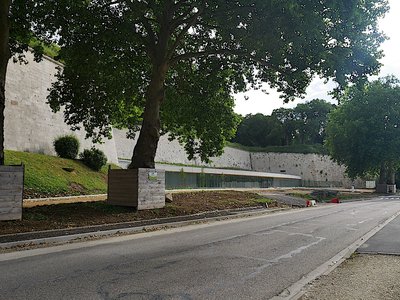
Les travaux du nouveau musée de la citadelle souterraine en juillet 2020. - Amis de saint Colomban HistoricalVerdun Underground Citadel
The underground citadel of Verdun was dug into the hill that had housed the Roman castrum and then the Abbey of Saint-Vanne.
An ultra-perfected logistics base, a dreaded starting point and a place of comfort greatly appreciated by soldiers, the underground citadel is an essential place of remembrance of the First World War.
Excavated between 1886 and 1893 under the Verdun citadel and organised to be able to shelter 2,000 men and keep them alive, the 4 kilometres of galleries played a major role during the battle of 1916, enabling French troops to resist the bombardments.
Aboard an audio-guided gondola, discover the daily life of French soldiers during the First World War. In 2020, a new museum is under construction nearby.
More details : visit Verdun's underground citadel.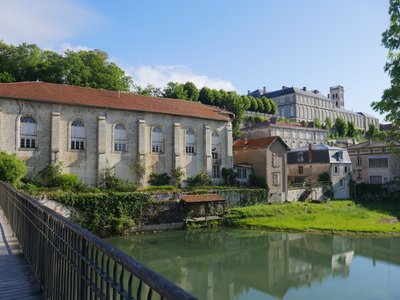
Vue du barrage depuis le pont écluse Saint-Amand - Amis de saint Colomban HistoricalSaint-Amand Lock Bridge at Verdun
The lock bridge was erected on the Saint-Vanne canal, this building is part of a vast program of fortifications imagined by Vauban in the 17th century. It is part of a set of three lock bridges built from 1680 onwards in order to block the arms of the Meuse to flood the valley in the event of an enemy attack.
Entrée de la vieille ville de Verdun par la Porte Châtel - Amis de saint Colomban St ColumbanLa Porte Châtel in Verdun
Formerly known as the "Porte Champenoise", it provided access to the Roman road from Reims to Metz. During his exile, Saint Colomban and his companions probably passed through this door, the opening of which dates back to the old castrum of which it was one of the entrances.
If the Porte Châtel is mentioned as early as the 12th century, the whole that can be admired today dates from the 13th century. Machicolations were added in the 14th century.
The construction of the great rampart that encompasses the lower town opens new gates to provide easier access to the Meuse and the gate is gradually being abandoned.
Cour d’honneur du Centre Mondial de la Paix. - Amis de saint Colomban HistoricalWorld Center for Peace in Verdun
The Episcopal Palace of Verdun was rebuilt in the 18th century. After an abandonment of the work during the Revolution, it was resumed after the Concordat and the bishop settled in 1823. In 1906, when the law separating the Churches and the State was passed, the city became the owner of the building, which was badly damaged during the battle of 1916. After a major restoration campaign, the bishop was able to return to the premises in 1935, with a rental lease, and left them definitively in 1993. The city of Verdun is going to install a World Peace Centre which will offer a permanent exhibition dedicated to the three Franco-German conflicts since 1870. Temporary exhibitions and events are also planned.
More information: World Peace Centre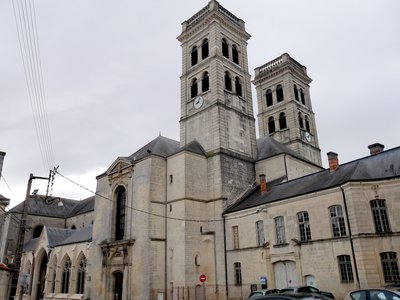
Cathédrale Notre-Dame de Verdun - Amis saint Colomban TouristCattedrale di Notre-Dame de Verdun
The oldest written mention of Verdun Cathedral dates back to the 10th century, making it one of the oldest in France. In spite of wars and fires the building has been able to preserve some 10th century witnesses such as the pillars. In the 12th century the crypt was built. In the renaissance period chapels and the cloister were added. After the fire of 1755 the reconstruction will be in the baroque style of the time with the baldachin, a reduced replica of that of St. Peter's in Rome, between the transept and the choir which is a beautiful example.
The Three Bishoprics, Metz, Toul and Verdun, created a province in 1552 (Treaty of Chambord) attached to the kingdom of France and the lands of the bishoprics and the three free cities formed an enclave in all of Lorraine of the former Germanic Roman Empire. In 1648 the Peace of Westphalia put an end to the war between Catholics and Protestants, a 30-year war. The Three Bishoprics were officially attached to the kingdom of France, but Louis XIV confirmed the privileges of the aldermen of the three cities. The Revolution sounded the death knell for this rich province.
More info: Wikipedia Verdun Cathedral
Nécropole Nationale de Brocourt-en-Argonne - Image : Amis de saint Colomban HistoricalAirfield 1915-1916 at Brocourt-en-Argonne
On leaving Brocourt in the direction of Jubécourt you will discover a military cemetery on the site of a World War I airfield.
The site is very well maintained and information plaques will inform you that Captain Guynemer, 53 air victories, was wounded at Brocourt on March 13, 1916.
Description
Go along the church by the rue Casimir Bonjour then the car park, left rue Henry Ditte, right rue des Déportés at the crossroads place de la République D 998
- At the entrance of Auzeville-en-Argonne, turn left into rue de la Scierie, left into rue Joseph Loyseau du Boulay, place Dom Jean-Baptiste Maugérard, left into rue Haute, turn right towards Brabant-en-Argonne.
- At the crossroads turn right towards Barbant-en-Argonne, rue des Brouets D 115, right chemin de Brocourt, left rue Basse in Brocourt, go straight along the church at the crossroads chemin de Biercourt, left at the crow's-foot, cross the railway, cross the D 603 straight on D 220, at Jout-en-Argonne, rue du Moulin, rue de l'église
- After the church of Jouy on the right, Grande Rue D 220, on the right at the crossroads with D 115, road to Dombasle, before the forest on the right at the crossroads of 4 paths facing the military field, walk on the edge of the woods.
- Turn right at the crossroads in the fields, right to cross the old railway line, cross the D 603, turn slightly right up a grassy path, left at the crossroads
- Right at the junction with rue de la Corvée, left at the crossroads of 4 chemins, côte Saint-Barthélemy, turn right at rue Saint-Barthélemy, right at the Stop sign, left at the Stop sign, right at the roundabout D 330
- Avenue du Général Boichut, turn left in the direction of the town centre, follow the ramparts of the citadel, Avenue du Soldat Inconnu, rue du Rû, after the car park on your left, turn left up rue des Gros Degrés, take the alley opposite rue du Pont des Augustins, you arrive in front of the cathedral which you bypass to access the building.
- Departure : Saint-Didier Church, 20 Rue Casimir Bonjour, 55120 Clermont-en-Argonne
- Arrival : Notre-Dame Cathedral , 7 Place Mgr Ginisty, 55100 Verdun
- Towns crossed : Grand Est
Altimetric profile
Report a problem or an error
If you have found an error on this page or if you have noticed any problems during your hike, please report them to us here:





